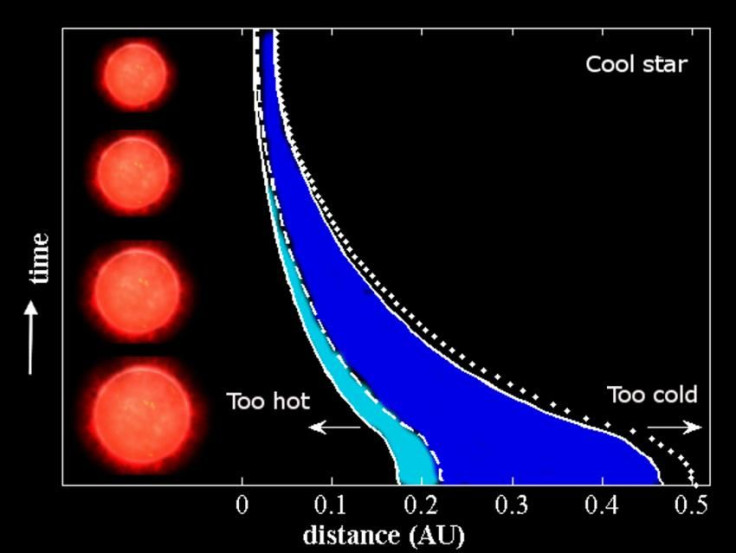Alien Life Found? ‘Infant Earths’ Could Hold Clues To Extraterrestrial Life In Universe

Many astronomers believe the question of whether alien life exists isn’t “if,” but “where.” New research could make it easier to pinpoint exactly which distant planets might be suitable for life beyond Earth. Scientists have discovered that the so-called habitable zone of young planets -- the region near a star in which water can exist as a liquid -- is wider than previously thought, which could make Earth-like planets more obvious, according to a new study from researchers at Cornell University in upstate New York.
"The search for new, habitable worlds is one of the most exciting things human beings are doing today and finding infant Earths will add another fascinating piece to the puzzle," Lisa Kaltenegger, associate professor of astronomy in Cornell's College of Arts and Sciences, said in a statement. "In the search for planets like ours out there, we are certainly in for surprises. That's what makes this search so exciting.” The new study will be published in the Jan. 1, 2015 issue of Astrophysical Journal Letters.
Habitable zones are neither too hot nor too cold, which could indicate the presence of water, one of the main ingredients for life. Star-orbiting planets located in the habitable zone are thought to be astronomers’ best bet for finding habitable planets. Finding that the distance between a young star and its habitable zone could be larger than scientists initially thought “means these infant planets should be able to be seen early on by the next generation of ground-based telescopes," said Ramses M. Ramirez, a research associate at Cornell. "They are easier to spot when the Habitable Zone is farther out, so we can catch them when their star is really young."

The search for extraterrestrial life has taken astronomers to the distance regions of the known universe. But there’s a lot of sky to cover. How scientists determine which of the billions upon billions of stars in the universe to investigate for signs of life involves a set of complex equations, intuition and a little bit of luck. Astronomers have several techniques at their disposal for pinpointing planets with conditions favorable to life, including determining a planet’s size and distance from a star by measuring the stars’ “wobble” – an indication of an orbiting planet’s gravitational pull. Astronomers can currently detect planets three to five times the mass of Earth, however, it is possible in the future that planets much smaller than Earth could be observed, according to the Telegraph.
By scientists’ estimates, there may be as many as tens of billions of planets capable of supporting life in the Milky Way alone. However, that doesn’t mean little green men are wandering every Earth-like planet in the galaxy. Other conditions, like atmosphere, have to be just right.
© Copyright IBTimes 2024. All rights reserved.






















